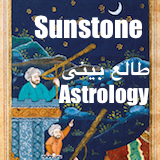The New Yorker:
People have wondered forever what determines the patterns that animals wear. We’re starting to figure it out.
By Rivka Galchen
Imagine grasshoppers distributed evenly across a dry field. As the temperature rises, the grasshoppers start to sweat. The field catches fire in a few spots and starts to spread. But the perspiration of the hoppers (profuse!) inhibits the fire’s growth. What kind of burn pattern will appear in the field? If the grasshoppers sweat more, or less, or if the fire spreads faster, or slower—how will that alter the burn pattern? This visualization was proposed by James D. Murray, a prominent scholar in the field of mathematical biology, in a paper in 2012. The point of it was to give people a sense of Turing patterns, a concept worked out by the mathematician Alan Turing, in 1952, to describe how a pattern can arise from an initially homogenous state. Turing patterns offer insight into (among other things) the patterns we find on animals, whether it’s the splotches on giraffes, the dot-and-line motifs on whale sharks, or the stripes on tigers. Those stripes appear where pigment-producing melanocyte cells are turned “on,” analogous to the burned sections of the field; the factors that turn these melanocytes on, or off, are analogous to the fire and the sweat. For decades, Turing patterns were one of the few tools we had to think about nature’s perplexingly marvellous motifs. But, recently, owing to researchers in widely different fields, that has changed.
To understand this work, it’s helpful to know what Turing was really trying to do. He had already imagined the “universal machine” that prefigured modern computing, proposed a test for determining whether a machine could be considered intelligent, and cracked the Nazis’ Enigma code. Now he was thinking about Holstein Friesian cows and about the way that a small group of cells could somehow “know” how to grow into the cows’ characteristic black splotches—or into the five-fold symmetric pattern of a starfish body, or the spirals of a pinecone. Turing disliked the near-mystical thinking around the origin of such designs. He didn’t believe in God and didn’t like the prevalent arguments that only the presence of a divine hand could explain such beauty and complexity. To counter that thinking, he said that he wanted to develop a “mathematical theory of embryology,” one that would puzzle out how a small sphere of cells could go on to assemble themselves into extensive and elaborate patterns of which they were only a tiny, unknowing, unthinking part. He thought about a simple system with an activator (like Murray’s fire) and an inhibitor (like the grasshopper sweat), in which the activator stimulates the production of its own inhibitor. After working overnight on equations representing such systems, Turing would corner colleagues the next day with printouts, asking, Do these look like cow splotches to you? What about these? In August, 1952, this thinking culminated in the publication of “The Chemical Basis of Morphogenesis,” the last paper Turing published before dying from biting into a cyanide-laced apple. Turing used potassium cyanide in his home laboratory to electroplate spoons with gold, so it’s unclear whether his death was intentional. Of his final paper, Turing said that it “does not make any new hypotheses; it merely suggests that certain well-known physical laws are sufficient to account for many of the facts.”
Go to link










Comments